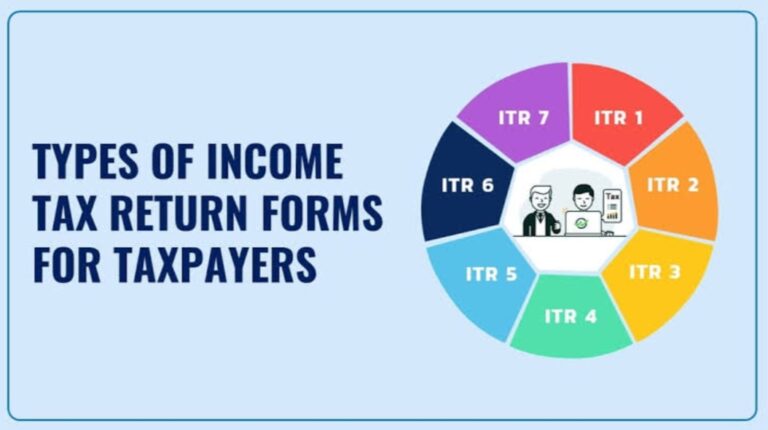Knowing the correct ITR form is crucial for accurate income tax return filing. Using the wrong form can lead to rejection of the return, delays in processing, penalties, or even legal scrutiny. Each ITR form is designed for specific categories of taxpayers based on income type, source, and amount. Selecting the appropriate form ensures proper disclosure of income, eligibility for deductions, and smooth processing of refunds. It also helps avoid unnecessary notices from the Income Tax Department. Therefore, understanding and using the correct ITR form is essential for hassle-free tax compliance.
Here’s a refined guide on which ITR form you should file for FY 2024‑25 (Assessment Year 2025‑26), based on your status and income sources:
🧾 ITR-1 (Sahaj)
- Who? Resident individuals with total income ≤ ₹50 lakh.
- Allowed income sources:
- Salary/pension
- One house property
- Other sources (e.g., interest, spouse’s pension) plus long‑term capital gains up to ₹1.25 lakh under Section 112A
- Agricultural income up to ₹5,000
- Not allowed: More than one property, business/professional income, foreign assets/income, lottery, racehorse income, capital gains above limit, etc.
📑 ITR-2
- Who? Individuals (resident/NR/HUF) not eligible for ITR-1.
- Allowed income sources:
- Salary/pension
- Multiple house properties
- Capital gains (short & long‑term)
- Foreign income/assets
- Agricultural income > ₹5,000
- Director of a company, unlisted equity, rental, pension
- For: Accepts diverse income; simpler than ITR-3.
🏢 ITR-3
- Who? Individuals/HUF with business or professional income.
- For: Proprietors, partners, freelancers, self-employed, or anyone with business or profession income, plus other sources like capital gains, foreign assets, losses brought forward.
💼 ITR-4 (Sugam)
- Who? Resident individuals/HUFs/firms under presumptive tax (Section 44AD/44ADA/44AE) with total income ≤ ₹50 lakh.
- Allowed income sources:
- Business/professional income on presumptive basis
- Salary/pension
- One house property
- Other sources (interest, etc.)
- LTCG up to ₹1.25 lakh
- Not allowed: More properties, non-presumptive business, foreign assets, etc.
🧑💼 Other Forms (General Heads)
- ITR-5: Firms, LLPs, AOPs, BOIs, trusts (not companies).
- ITR-6: Companies not claiming exemption under Section 11.
- ITR-7: Trusts, political parties, NGOs etc.
🔄 New vs Old Tax Regime
- The new regime is the default for FY 2024‑25. To claim exemptions/deductions, you must opt into the old regime within the selected ITR form. For ITR‑3/4/5 with business income, you’ll also need Form 10‑IEA
🗓️ Filing Updates & Deadlines
- ITR-1 and ITR-4 are already available for e‑filing.
- ITR-2 and ITR-3 utilities are still pending; the deadline has been extended to 15 September 2025
✅ Quick Reference Table
| Form | Who Should File | Income Sources | Notes |
|---|---|---|---|
| ITR‑1 | Resident, income ≤ ₹50 lakh from salary, 1 property, other sources; LTCG ≤ ₹1.25L | No business, no foreign income, single property | |
| ITR‑2 | Individuals/NRI/HUF with salary + multiple properties, capital gains, foreign assets, pension | No business income | |
| ITR‑3 | Self-employed, professionals, business income, partners, plus CG/foreign assets | Business or profession income | |
| ITR‑4 | Presumptive business/profession under 44AD/ADA/AE ≤ ₹50 lakh income | Simplified alternative to ITR-3 |
🔎 How to Choose:
- List your income sources (salary/pension, properties, capital gains, business/profession, foreign).
- Check income threshold (₹50 lakh cap for ITR‑1/ITR‑4).
- Decide tax regime: New (default) or Old (requires opting and possibly Form 10‑IEA).
- Select the highest complexity form your profile requires.
🧭 Next Steps:
- Log in to the income tax e-filing portal.
- Start with ITR‑1 or ITR‑4 if eligible.
- If not, wait for ITR‑2/ITR‑3 utilities (available soon—deadline extended).
-
Choose your tax regime wisely before submitting.
